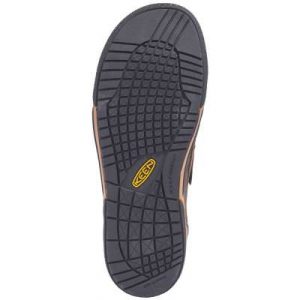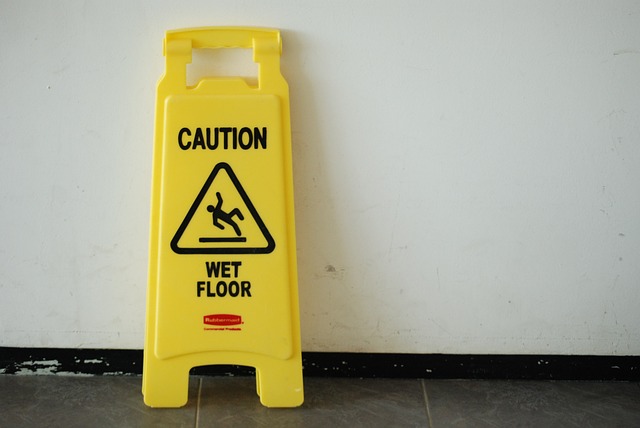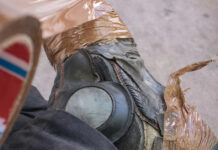Falls are a serious hazard for our workforce. Preventing slips by wearing the right protective footwear is one impactful way to safeguard against this serious hazard.
The Cost of Slips, Trips, and Falls
Data from the Bureau of Labor Statistics (BLS) shows that over 240,000 workers missed one or more days of work due to injuries from falls, slips, and trips in 2019 and 880 workers died from them. Injuries from falling also create significant costs for companies with workers’ compensation and medical costs estimated at $70 billion annually.
Standards for Slip-Resistant Footwear
The American Society for Testing Materials (ASTM) has certified the SATRA Technology Center “full shoe” method of testing slip resistance. The introduction of a new ASTM slip resistance standard (F2913-11 – “Standard test method for measuring the coefficient of friction for evaluation of slip performance of footwear and test surfaces/flooring using a whole shoe tester”) provides an assessment of the safety of footwear for the U.S. market. This test takes into consideration not only the shoe itself but also the surface and substance that a worker may encounter.
What Makes an Outsole Slip-Resistant?
 A shoe’s outsole is what makes it slip-resistant. Tread pattern, design, and material are factors that contribute to making a non-slip outsole. A soft, rubber material will allow the outsole to grip a slick or slippery floor. An interlocked tread pattern will channel water away from your foot, allowing the sole to contact the floor to help keep you steady. Occupational Health & Safety magazine recommends that for maximum slip protection, it’s important to choose shoes with at least two millimeters of space between the tread pattern shapes. Additionally, there should be about three millimeters between the sole of your non-slip work shoe and the bottom of the tread to allow the liquid to disperse quickly.
A shoe’s outsole is what makes it slip-resistant. Tread pattern, design, and material are factors that contribute to making a non-slip outsole. A soft, rubber material will allow the outsole to grip a slick or slippery floor. An interlocked tread pattern will channel water away from your foot, allowing the sole to contact the floor to help keep you steady. Occupational Health & Safety magazine recommends that for maximum slip protection, it’s important to choose shoes with at least two millimeters of space between the tread pattern shapes. Additionally, there should be about three millimeters between the sole of your non-slip work shoe and the bottom of the tread to allow the liquid to disperse quickly.
A great example of rugged SR footwear can be found at Working Person’s Store – the Wolverine Durashock Work Boots are built with outsoles that are not only slip-resistant, but they’re also designed with compression pads that can dissipate the force and impact of your steps.
WPS also has Ariat Pull-On Western Boots and Reebok Athletic Shoes that are created to provide the ultimate traction. Slip-resistant work shoes for women and men can be found at our online store.
Caring for Your Outsoles and When to Say Goodbye
To make sure that your outsoles will do their job effectively, it’s critical to keep them clean. Help maintain the integrity of your shoes by cleaning the outsoles and removing build-up between the tread grooves. With day after day of wear and tear, you’ll eventually need to replace your slip-resistant footwear to stay safe on the job site. Like a tire on your car, a shoe’s outsole tread depth is reduced by wear. That’s why it’s important to monitor the outsole’s tread depth. When you begin to notice the tread depth wearing down, it’s a good idea to replace your shoes.
Choosing the right gear for your feet can guard you against injury, which in turn prevents missed workdays. Finding an effective fit is crucial in your day-to-day foot comfort, so make the footwear decision that’s best for your individual feet. Visit WorkingPerson.com to view our selection of hundreds of slip-resistant shoes from trusted, high-quality brands.




